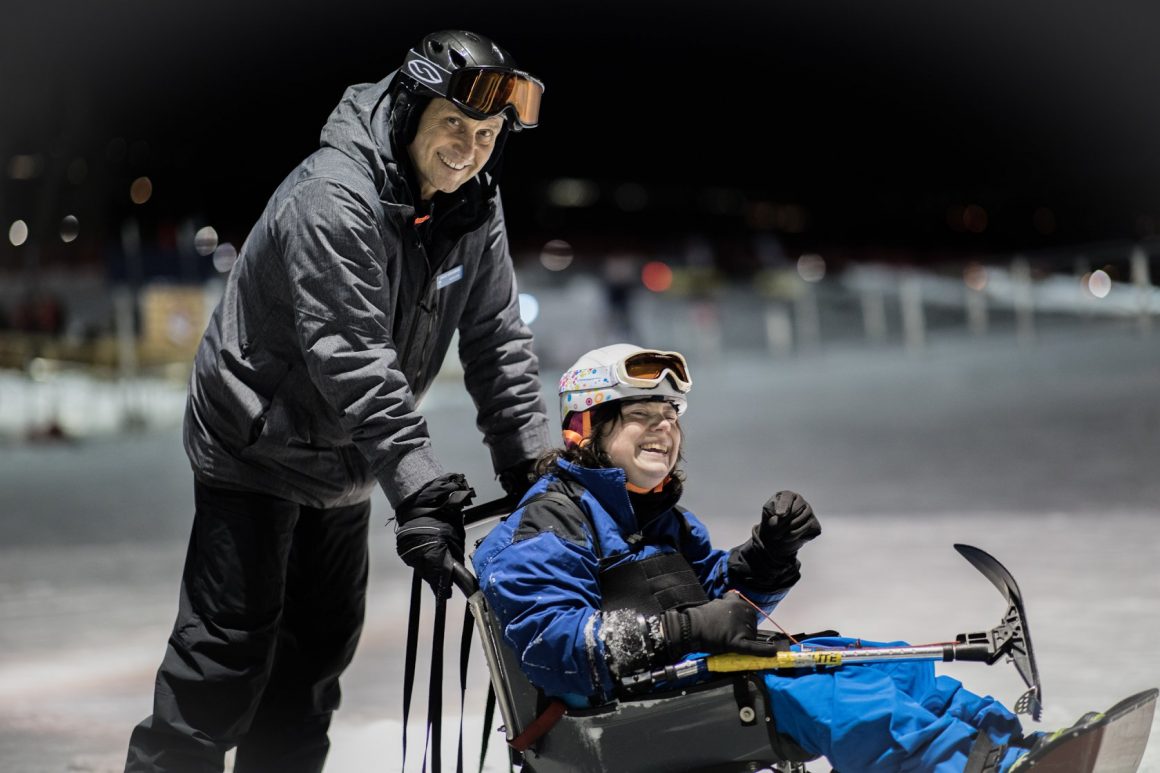
Canadian Association for Disabled Skiing thankful to U of C students for volunteering
By Kristy Koehler, March 27 2019 —
The Canadian Association for Disabled Skiing (CADS) provides opportunities for folks with disabilities to ski or snowboard in a safe environment, using equipment tailored to the needs of each individual.
Matt Shaw, in addition to being a supervisor for the program, sits on the association’s board of directors. He says CADS is one of the first adaptive skiing programs in Canada as well as the largest.
“We are definitely the biggest in Canada — we’re probably the biggest in North America and potentially the biggest in the world,” he said. “We’re one of the largest programs out there.”
There are roughly 500 volunteers and 150 students in the program, large enough that the group has to lease the hill from WinSport every Sunday night. The program relies on volunteer and community support, both for monetary contributions and labour. CADS only has one part-time employee — the rest of the people in the organization are all volunteers.
“We do charge program fees but we’ve never turned a student away if they couldn’t afford it,” Shaw said. “Our money comes from program fees but we get some support depending on the government or the year and then our national organization sometimes contributes funds as well.”
Shaw says the convenience of WinSport is a huge plus for participants in the program.
“It’s really helpful to our students that they can take public transit to our program,” he said. “A lot of the other programs that run across Canada have to be at ski hills — Calgary is pretty lucky in that we have a ski hill within city limits.”
Participants in the program have gone on to have successful athletic careers.
Alana Ramsay stated skiing with the program before winning Female Para-Athlete of the Year at the 2016 Canadian Ski Racing Awards. In addition to multiple World Cup and National Championship wins, Ramsay won her first Paralympic medals, a pair of bronze medals in super-G and super combined at the 2018 Paralympic Games.
Shaw says he’s still relatively new after spending four years with the program. There are volunteers celebrating decades of service with the organization.
“When I started, I thought it would be kind of cool to share snowboarding with people who might not get exposed to it,” he said. “This last year or so, my motivation has really been for the caregivers.
“They try to get their kids into different programs and they try to get them exposed to different things,” he continued. “And, they get used to hearing, ‘No, your child can’t do this — your kid is not physically capable of doing this’ or, ‘They’re not mentally capable of doing this.’ ”
Shaw says parents are shocked when the CADS staff are so confident in their ability to help someone’s loved one get on the hill.
“To see these students fall and get bruises and take one step forward and two steps backward and have to really push hard — you see it raise their confidence, which is really cool,” said Shaw.
CADS has plenty of equipment and staff to help folks with all types of disabilities gain independence on the hill. Notably, the sit-ski is exactly as it sounds — a seated ski to assist those without the use of their lower extremities.
“I think there’s a lot of benefit from being challenged in life,” Shaw said. “I think there’s a lot of benefit from getting bruises and falling down and sucking at things. The world is a tough place for people with disabilities. We’re a safe environment for them to fail and struggle and progress.
“All of our students have been through something similar and they can relate to each other,” he added. “There’s going to be no awkward looks if they’re having a bad day or are struggling with something. It’s a very safe place to learn.”
Students of the CADS program come from all walks of life, all ages and all different abilities.
“We get people with [multiple sclerosis] and ALS and neurological diseases who want to get back on the mountain again,” said Shaw. “We always try to make students as involved as possible but worst-case scenario, if you can’t move your legs or you can’t move your arms we can put you in the sit-ski and have someone behind you tethering you down the hill.”
Shaw says that University of Calgary students have been an invaluable part of CADS’s volunteer corps over the years. He says 15–20 per cent of volunteers are U of C students.
“It looks great on a resumé,” said Shaw. “A lot of our volunteers have gone on to med school.”
Both undergraduate and graduate students have helped out with CADS. Being a certified ski instructor isn’t mandatory to volunteer with the program.
“If you can comfortably and safely get down a blue run on your own then you can be a volunteer,” said Shaw. “We’ll teach you how to teach — we just ask that you can comfortably get down a blue run and we’ll show you the rest. A lot of our instructors have come from the University of Calgary and it would be great to get even more people knowing about us.”
Students interested in getting involved can go to the organization’s website at cadscalgary.ca.
